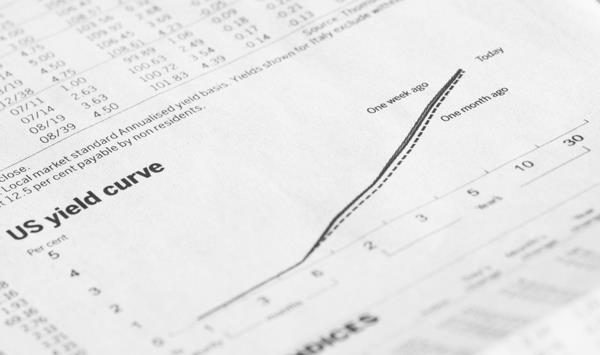View Sale Announcement Detail


Archived news
Excerpt:
No one wants to experience another recession, but the flattening yield curve is a troubling signal that this could materialize. Lenders can take heed by moving to protect and maximize their loan portfolios.
~~~
Even though key economic indicators continue to paint a positive picture of this country's economy, there are some underlying signs of trouble. Of particular note is the fact that the yield curve has flattened. Historically speaking, this could be seen as a sign of an impending recession.
 A flattening yield curve could be a powerful sign that a recession is on the horizon.
A flattening yield curve could be a powerful sign that a recession is on the horizon.
Is a Recession is On the Horizon?
In its most basic terms, the yield curve is the difference between interest rates on short and long-term U.S. government bonds. When an economy is healthy, the rates paid on long-term bonds are generally higher than those paid on short-term ones. Buyers receive extra interest payment for agreeing to tie up their cash for a longer term and risk inflation.
Lately, the gap between short and long-term interest rates on bonds has been shrinking. This creates a flatter yield curve.
The gap between two and ten-year U.S. Treasury notes is a specific example, which is now about 0.34 percentage points. This is the narrowest gap in over a decade, meaning the last such event occurred just before the start of the Great Recession. At some point the yield curve may become inverted, meaning short-term rates will be higher than long-term ones.
 A loan sale advisory service can help banks maximize portfolios in the face of a flattening yield curve.
A loan sale advisory service can help banks maximize portfolios in the face of a flattening yield curve.
Top Factors to Consider
Flattening and inverted yield curves have been reliable predictors of recessions, but that doesn't necessarily mean we are destined for another economic crisis. On the other hand, the San Francisco Fed reports that an inverted yield curve has preceded every recession in the past half-century.
The economy remains strong despite these particular worries. Unemployment has reached an 18-year low, consumer spending is rebounding, and corporations are boosting their investments. Some Wall Street economists predict that the economy will grow roughly 5 percent this quarter on an annualized basis.
On more sour notes, the U.S. stock market has been struggling since its early first quarter correction, and there is a negative return on some corporate bonds and key commodities. Also, fear about a flattening yield curve can be a self-fulfilling prophecy since frightened investors could increasingly pour more cash into safer long-term Treasury bonds, driving the curve even flatter.
When a yield curve flattens, bank profits suffer. Even worse, an inverted yield curve makes banking a losing enterprise. This is something that can not only halt nationwide economic growth but also threaten the bottom line results of lenders.
Now is the Time to Partner With a Whole Loan Broker
A flattening yield curve could play havoc with bank profits in the short term. This is particularly the case if this condition leads to a dip in the economy. To minimize risk and boost returns, banks can shore up portfolios by divesting of bad assets and adding high-quality short duration assets. Garnet's loan sale advisory services can facilitate these transactions.
Sign up for our newsletter to receive market updates and more information about working with a loan sale advisor.
Garnet Capital Advisors 500
Mamaroneck Avenue, Harrison, NY 10528
(914) 909-1000
info@garnetcapital.comGarnet Capital Advisors 500
Mamaroneck Avenue, Harrison,
NY 10528
(914) 909-1000